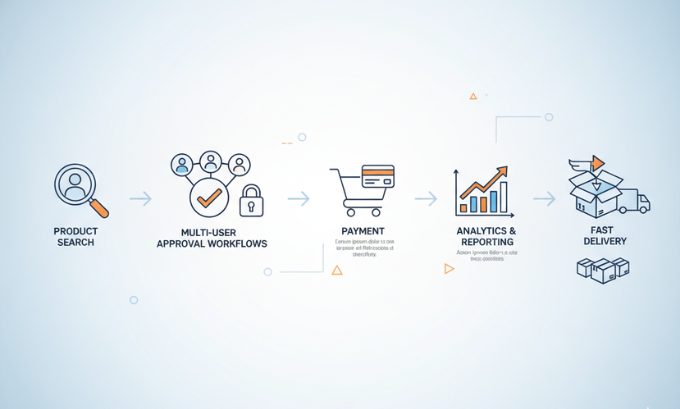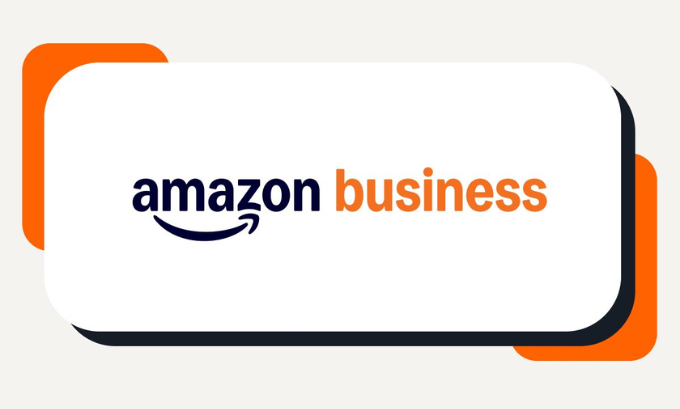Running a business means juggling countless decisions daily. From sourcing supplies to managing budgets, procurement can quickly become a major headache. Amazon Business is changing that equation. This B2B platform offers businesses of all sizes—from solo entrepreneurs exploring small business ideas to Fortune 100 corporations—a streamlined way to purchase everything they need, often with significant cost savings and efficiency gains.
Amazon Business isn’t just Amazon.com with a new label. It is a sophisticated procurement ecosystem built specifically for organizational buyers. It comes complete with bulk pricing, approval workflows, analytics tools, and integration capabilities that traditional B2B suppliers struggle to match. Whether you’re a small business owner trying to cut costs or a procurement professional managing millions in annual spend, understanding how Amazon Business works can transform your purchasing operations. Effective digital marketing strategies can also help you maximize its potential.
This comprehensive guide explores everything you need to know about Amazon Business, from its core features and benefits to practical strategies for selling on the platform. We’ll examine how businesses leverage this marketplace, compare it to traditional procurement channels, and provide actionable insights to help you get the most value from this powerful platform.
What is Amazon Business?
Amazon Business is Amazon’s dedicated B2B marketplace, launched in 2015 to serve organizational buyers. It’s a specialized version of Amazon.com designed specifically for business purchasing needs. The platform connects millions of business customers with hundreds of millions of products, from office supplies and industrial equipment to IT hardware and janitorial supplies.
According to Shelley Salomon, Global Vice President for Amazon Business, the platform provides “procurement tools and features that help businesses of all sizes streamline purchasing, control spending, and free up time to focus on what matters most.” This focus on operational efficiency is what distinguishes Amazon Business from consumer-focused e-commerce.
The platform has seen remarkable growth. Doug Herrington, CEO of Amazon Worldwide Stores, notes that Amazon Business has become “one of the fastest-growing parts of Amazon” by “constantly innovating on behalf of business customers.” Today, 97 of the Fortune 100 companies actively use Amazon Business, alongside millions of small and medium-sized businesses worldwide.
Understanding what is a business in today’s market is key to leveraging platforms like this. For deeper insights, you can explore resources that break down modern business structures.
How Amazon Business Works
Amazon Business operates on the same underlying infrastructure as Amazon.com but adds specialized features for organizational purchasing. Here’s a look at how it functions:
Account Structure and User Management
Businesses create a verified Amazon Business account, which can support multiple users with different permission levels. This multi-user functionality allows companies to establish approval workflows, spending limits, and purchasing guidelines across their organization.
For example, a procurement manager could grant employees permission to purchase office supplies up to $500 without approval, while requiring management sign-off for larger purchases. This flexibility helps businesses maintain spending control while empowering employees to get what they need quickly.

Product Selection and Pricing
The platform offers access to hundreds of millions of products across nearly every category. Pricing often includes quantity discounts that automatically apply when purchasing in bulk. A business buying 50 laptop chargers gets a lower per-unit price than someone buying just one.
Many products also display business-only pricing that’s lower than consumer pricing, reflecting the economies of scale that come with B2B transactions. Sellers can also offer custom quotes for high-volume orders through the Request for Quote (RFQ) feature.
Purchasing and Payment
Amazon Business supports various payment methods tailored to organizational needs, including credit lines, invoice terms, and purchase order systems. This flexibility accommodates how businesses operate, rather than forcing them into consumer payment models. The platform can even integrate with existing procurement systems, such as an ERP for small business, allowing companies to pull purchasing data directly into their accounting software.
Fulfillment and Delivery
Amazon leverages its massive global logistics network to deliver products quickly and reliably. Business Prime members receive free shipping on eligible orders, with delivery options ranging from same-day to scheduled bulk deliveries. For businesses aiming to scale a business successfully, this efficient fulfillment is a significant advantage.
Key Features That Set Amazon Business Apart
Several unique features make Amazon Business more than just “Amazon for companies”:

Business Prime Membership
Business Prime offers enhanced benefits tailored to organizational needs. Members receive free shipping on millions of items, access to exclusive deals, and tools like Guided Buying that help enforce purchasing policies. The membership scales with business size, offering different tiers for various needs.
Quantity Discounts
Bulk purchasing automatically triggers tiered pricing. Buy 10 items and pay one price; buy 100 and pay significantly less per unit. This transparent discount structure makes it easy to see cost savings before committing to large orders.
Request for Quote (RFQ)
For high-volume purchases or custom needs, the Request for Quote (RFQ) feature lets buyers submit detailed specifications and receive competitive quotes from multiple sellers. This brings traditional B2B negotiation into the digital marketplace.
Approval Workflows
Administrators can create multi-level approval processes that route purchase requests through the right channels based on amount, category, or other criteria. This governance structure prevents unauthorized spending while keeping purchasing efficient.
Business Analytics Dashboard
The analytics dashboard provides comprehensive visibility into spending patterns, helping businesses identify cost-saving opportunities and track budgets. Users can generate detailed reports by department, category, or time period using these AI-powered data analytics tools.
Tax Exemption Support
Amazon Business accommodates tax-exempt purchasing for qualified organizations, streamlining a process that’s often cumbersome in traditional procurement.
Integration Capabilities
The platform integrates with major procurement and accounting systems, including SAP Ariba, Coupa, and Oracle. These integrations create a seamless flow of data between Amazon Business and existing enterprise systems. Understanding digital transformation strategies is crucial for leveraging these integrations effectively.
Who Benefits from Amazon Business?
Amazon Business serves a remarkably diverse customer base, from individual entrepreneurs to massive corporations. Here’s how different segments use the platform:
Small Businesses
Small businesses and entrepreneurs use Amazon Business to access wholesale pricing without minimum order requirements. A local coffee shop can purchase supplies at competitive prices without negotiating with multiple vendors or holding large inventories. This consolidation saves time and administrative overhead. Many entrepreneurs exploring new ventures find value in lists of small business ideas that can be supported by this platform.
Medium-Sized Organizations
Mid-market companies benefit from the scalability and control features of Amazon Business. These organizations often have more complex purchasing needs than small businesses but lack the large procurement departments of Fortune 100 companies. The approval workflow capabilities help these businesses maintain spending control as they grow.
Large Enterprises and Fortune 100 Companies
Major corporations use Amazon Business‘s integration capabilities to complement their existing procurement systems. For these organizations, the platform’s data and analytics are invaluable. With thousands of transactions, the ability to analyze spending patterns is crucial for strategic cost management. The RFQ feature also allows them to negotiate custom pricing for high-volume buys.
Government and Educational Institutions
Public sector organizations have unique procurement requirements, like competitive bidding rules. Amazon Business accommodates these needs through specialized government purchasing programs and educational discounts, allowing schools, universities, and government agencies to maintain compliance while accessing competitive prices. Setting clear objectives is vital for these institutions, and a guide on goal setting for success can provide a useful framework.
Business Prime: Premium Membership Benefits
Business Prime elevates the standard Amazon Business experience with premium features designed for organizations with significant purchasing volume.
- Free Shipping Benefits: Members get free shipping on millions of eligible items with no minimum purchase, a huge cost-saver for frequent orders.
- Enhanced Business Analytics: Premium analytics tools offer deeper insights into spending patterns, supplier performance, and cost-saving opportunities.
- Guided Buying: This feature helps enforce purchasing policies by directing employees toward preferred suppliers or products.
- Expanded User Licenses: Memberships include multiple user licenses, scaling with the organization’s size.
- Priority Customer Support: Members get access to dedicated business customer service representatives.
- Exclusive Deals and Promotions: Business Prime members can access business-only deals not available to standard account holders.
For businesses looking for growth strategies, exploring low-cost marketing ideas for startups can complement the savings achieved through Business Prime.
Selling on Amazon Business
Amazon Business presents a major opportunity for sellers looking to reach organizational buyers. The B2B marketplace operates alongside the consumer one but has distinct dynamics.

Getting Started as a B2B Seller
Existing Amazon sellers can expand into Amazon Business by enabling business-only features in their accounts. New sellers must complete the standard registration process. The platform requires high performance standards, including fast shipping and responsive customer service, as B2B buyers are less patient with issues.
Product Listings and Optimization
Creating effective product listings for business buyers is different. B2B buyers want detailed specifications, compliance certifications, and bulk pricing information displayed prominently. Titles should use industry-standard terms. For example, a construction company will search for “ANSI-rated safety helmets,” not “cool hard hats.” While high-quality images are important, technical drawings and dimension diagrams are also beneficial. For a deeper dive, learning more about a Monarch Networth Capital style of detailed financial analysis can be useful.
Obtaining Product Identifiers
Most products on Amazon need unique identifiers like Universal Product Codes (UPCs). Sellers should get these from GS1, the official issuer, to avoid issues. For private label products, enrolling in Amazon Brand Registry offers protection against counterfeiters, though it requires a registered trademark.
Pricing Strategies for B2B
Business buyers expect quantity discounts, so tiered pricing is essential. You can also offer business-only pricing that is lower than your consumer price. The RFQ feature allows you to negotiate custom pricing for high-volume buyers, which can secure large, steady accounts. To better understand market dynamics, it’s helpful to track metrics like the Monarch Networth share price to see how financial markets value different business models.
Fulfillment Options
Amazon offers two main fulfillment approaches:
- Fulfillment by Amazon (FBA): Amazon handles storage, packing, shipping, and customer service. This maximizes Prime eligibility but has fees.
- Fulfillment by Merchant (FBM): You handle your own inventory and shipping. This offers more control but requires more operational capacity.
A detailed guide on Amazon FBA can help sellers decide which option is best for their business model.
Navigating Compliance and Regulations
B2B sales often involve extra compliance requirements. Certain products need certifications or safety data sheets. Sellers must ensure their products meet industry standards and provide all necessary documentation. Failure to do so can lead to listing suspension.
If you are exploring various e-commerce ventures, this overview of best e-commerce business ideas for beginners can provide some inspiration.
Amazon Business vs. Traditional B2B Procurement
How does Amazon Business stack up against traditional procurement channels?
| Feature | Amazon Business | Traditional Procurement |
|---|---|---|
| Pricing | Transparent, with visible quantity discounts. | Often requires quotes and negotiations. |
| Selection | Massive breadth across categories. | Specialized expertise in narrow categories. |
| Speed | One-click ordering, fast delivery. | Multi-step process, longer lead times. |
| Relationship | Standardized, efficient service. | Personalized service and strategic partnerships. |
| Data | Unified platform with robust analytics. | Fragmented data across different vendors. |
The best approach often involves using Amazon Business for routine purchases while maintaining strategic relationships with key suppliers for critical items. To learn more about how to scale a business successfully, it’s important to understand how to blend these different procurement strategies.
Getting Started with Amazon Business
Ready to leverage Amazon Business? Here’s your roadmap:
- Create Your Business Account: Visit the Amazon Business homepage and create a free account. Verification usually takes 1-2 business days.
- Set Up Users and Permissions: Add team members and assign appropriate permissions and approval workflows.
- Configure Payment Methods: Add credit cards or apply for an Amazon Business Line of Credit.
- Establish Purchasing Policies: Use Guided Buying to direct employees to preferred products or suppliers and set spending limits.
- Integrate with Existing Systems: If you use procurement or accounting software, explore integrations to automate data entry. Consider a warehouse management software for small business for better inventory control.
- Consider Business Prime: Evaluate if a Business Prime membership makes sense for your purchasing volume.
- Train Your Team: Ensure employees know how to use the platform effectively.
For entrepreneurs just starting, a beginner’s guide on what is a business can provide foundational knowledge.
Sustainability and Social Responsibility
Amazon Business is increasingly emphasizing sustainability initiatives.
- Environmental Initiatives: The platform offers tools to track packaging waste and delivery emissions. The Climate Pledge Friendly program highlights products with sustainability certifications. Businesses can also opt for pallet delivery to consolidate orders and reduce delivery trips.
- Ethical Sourcing and Diversity: Amazon Business provides data on supplier diversity, helping companies meet their spending goals with minority-owned, women-owned, and small businesses. For more information on how to incorporate such values into your marketing, you might want to learn from experts in digital marketing.
Frequently Asked Questions about Amazon Business
How much does Amazon Business cost?
Creating an account is free. Business Prime membership costs vary based on organization size.
Can I use my personal Amazon account for business?
You can, but a dedicated Amazon Business account offers business-only pricing, tax exemption, and other crucial features.
What’s the difference between Amazon Business and regular Amazon?
Amazon Business adds B2B-specific features like quantity discounts, approval workflows, and business analytics.
How do I get tax-exempt status?
Qualified organizations can submit their tax exemption certificates through their account settings for verification.
Can I negotiate pricing?
For high-volume purchases, the Request for Quote (RFQ) feature allows for price negotiation.
What payment terms are offered?
Options include credit/debit cards, an Amazon Business Line of Credit with net terms, and P-card integration.
Your Next Move
Amazon Business has reshaped how organizations buy what they need. By combining massive selection, transparent pricing, powerful analytics, and seamless delivery, it offers value that traditional channels struggle to match. To know more about how to scale a business successfully, you can find valuable resources at sites like Mumbai Times.
Whether you’re a small business owner aiming to cut costs, a procurement professional optimizing spending, or a seller trying to reach B2B customers, Amazon Business provides tools worth exploring. The key is to strategically integrate its capabilities into your operations. Start by assessing your needs and exploring the platform’s features. The future of B2B commerce is here, and it’s time to get on board.
Author Bio
This article was written by a team of e-commerce and business strategists with extensive experience in B2B procurement and digital marketplaces. Our analysis is based on industry data, case studies, and firsthand experience with the Amazon Business platform.
References
- Insights from Shelley Salomon, Global VP for Amazon Business.
- Commentary from Doug Herrington, CEO of Amazon Worldwide Stores.
- Amazon Business and Business Prime feature documentation.
- Procurement industry reports and B2B e-commerce market analysis.

